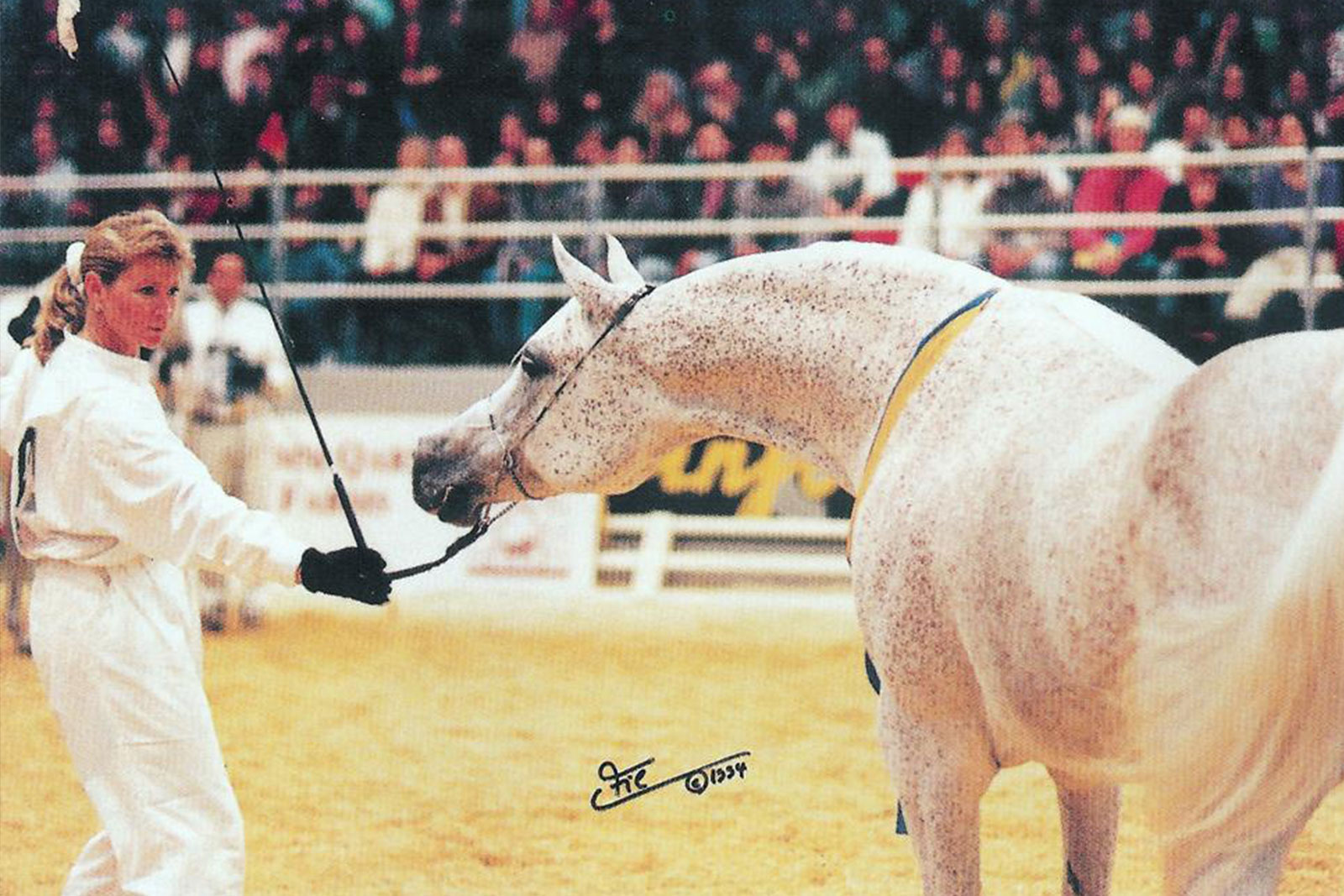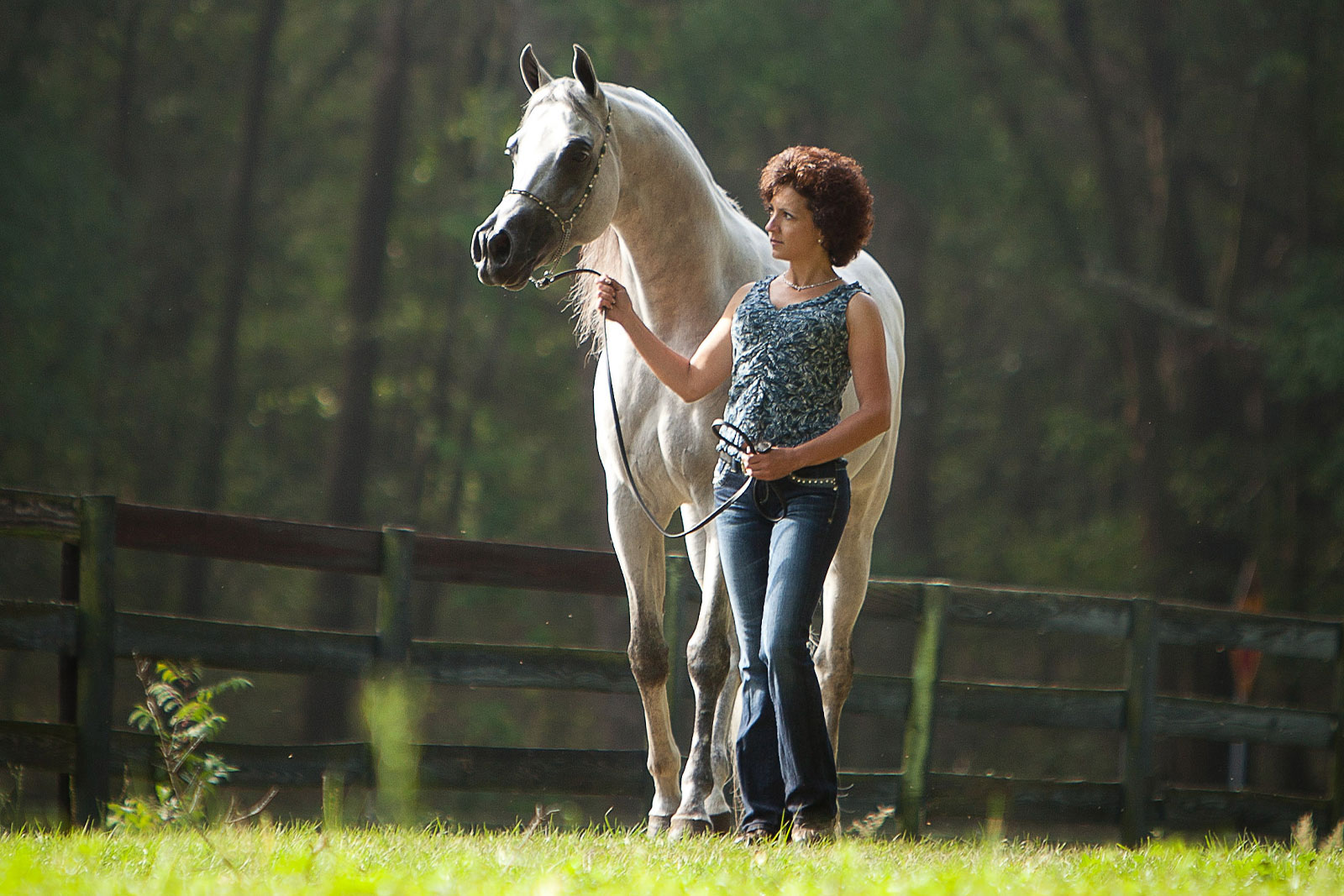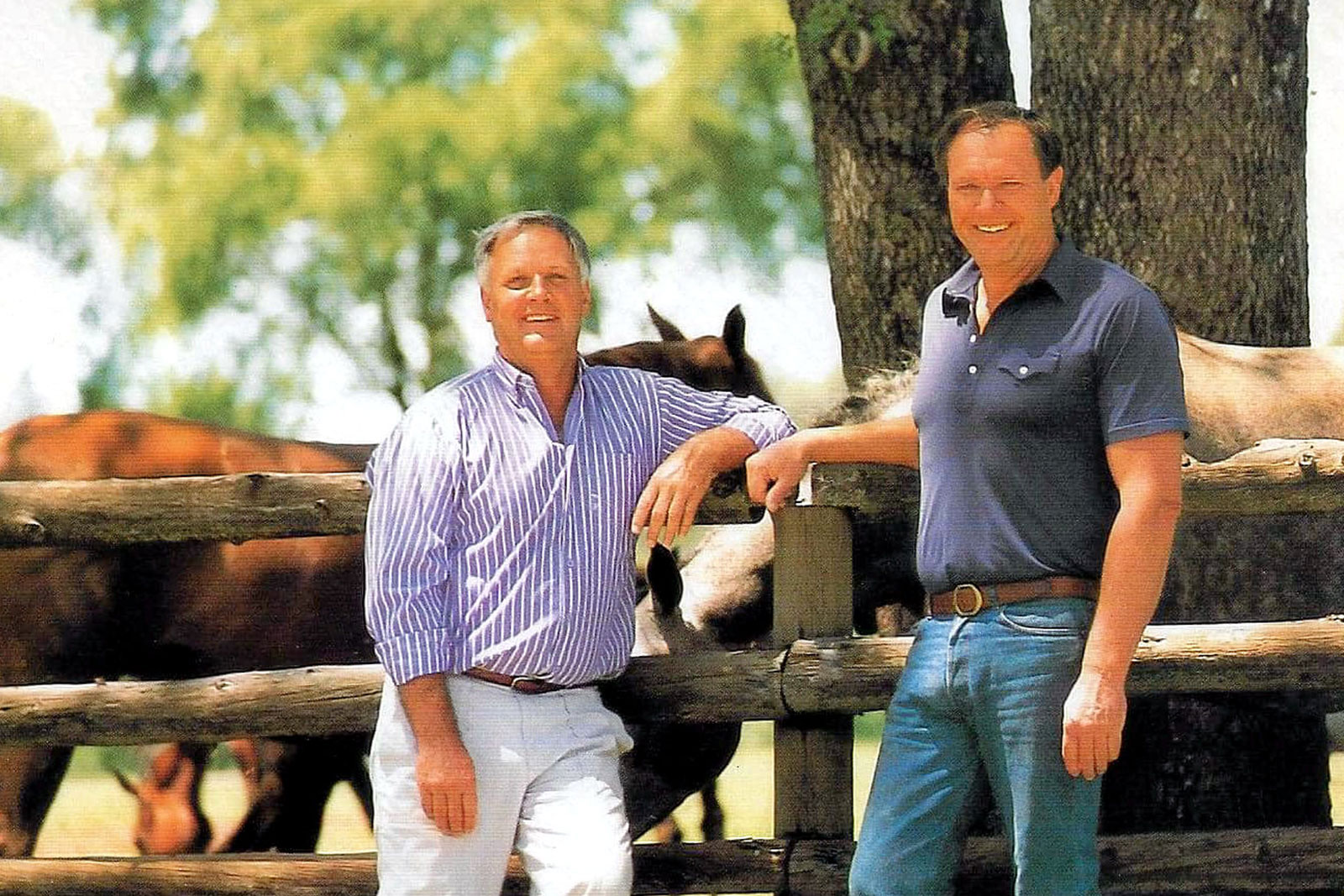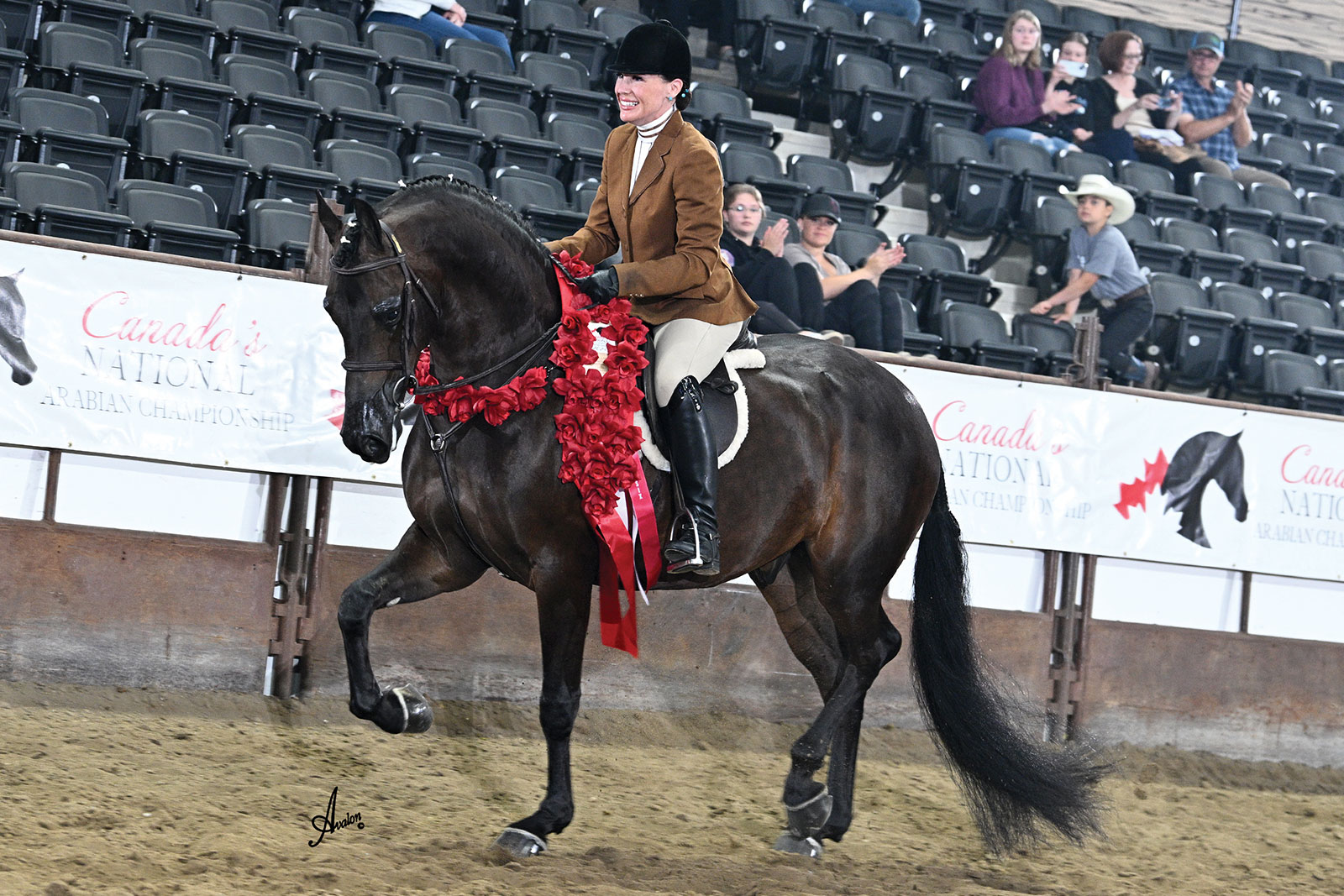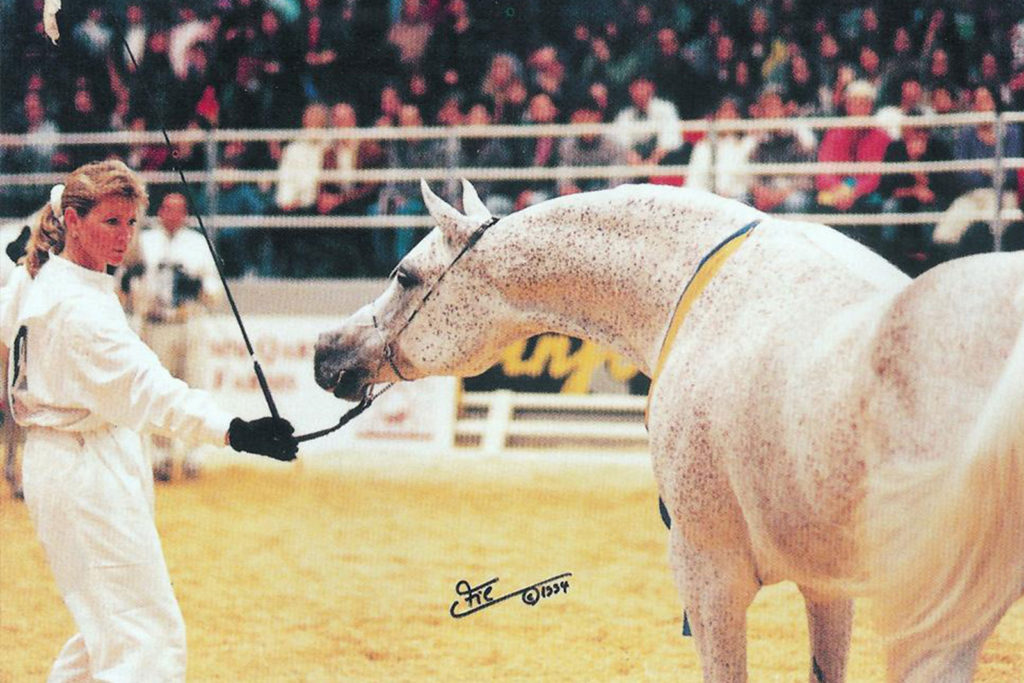
Eileen and World Champion Imperial Phanilah.
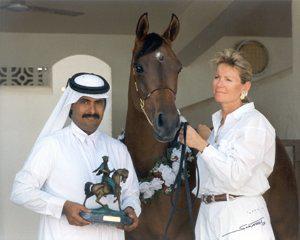
Sheikh Hamad Bin Ali Al Thani, manager of Al Shaqab Stud, and Eileen Verdieck with Little Liza Fame, the dam of Marwan al Shaqab, after receiving the Best Breeder Award at the Qatar International Show.
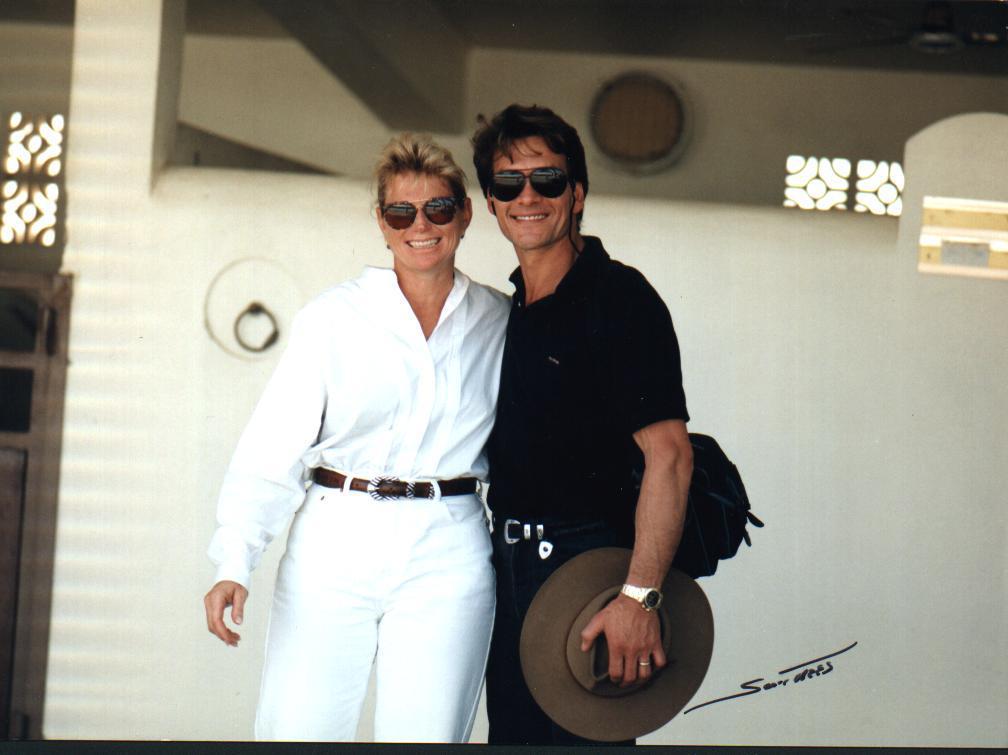
Eileen with Arabian horse lover and actor Patrick Swayze in Qatar in 1994.
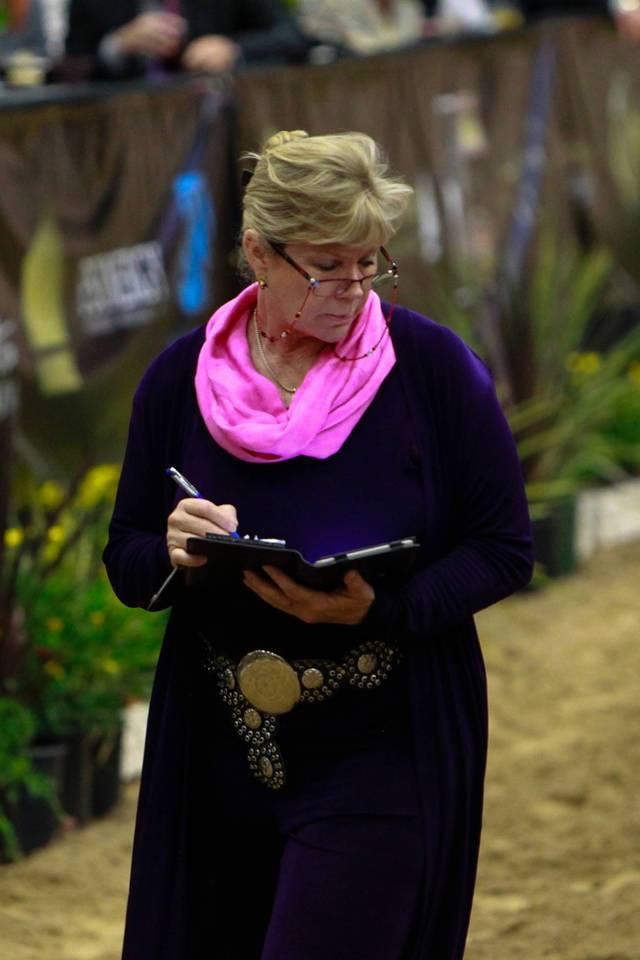
Eileen judging the Las Vegas World Cup show in 2015.
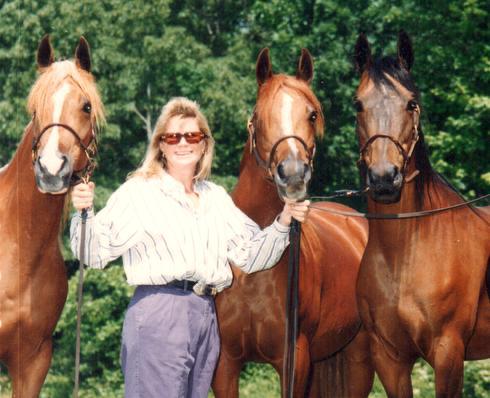
Eileen with three mares sold to Al Shaqab Stud in February 1994. From left to right: PR Padrons Jewel, Amber Silk and Kajora Gucci.
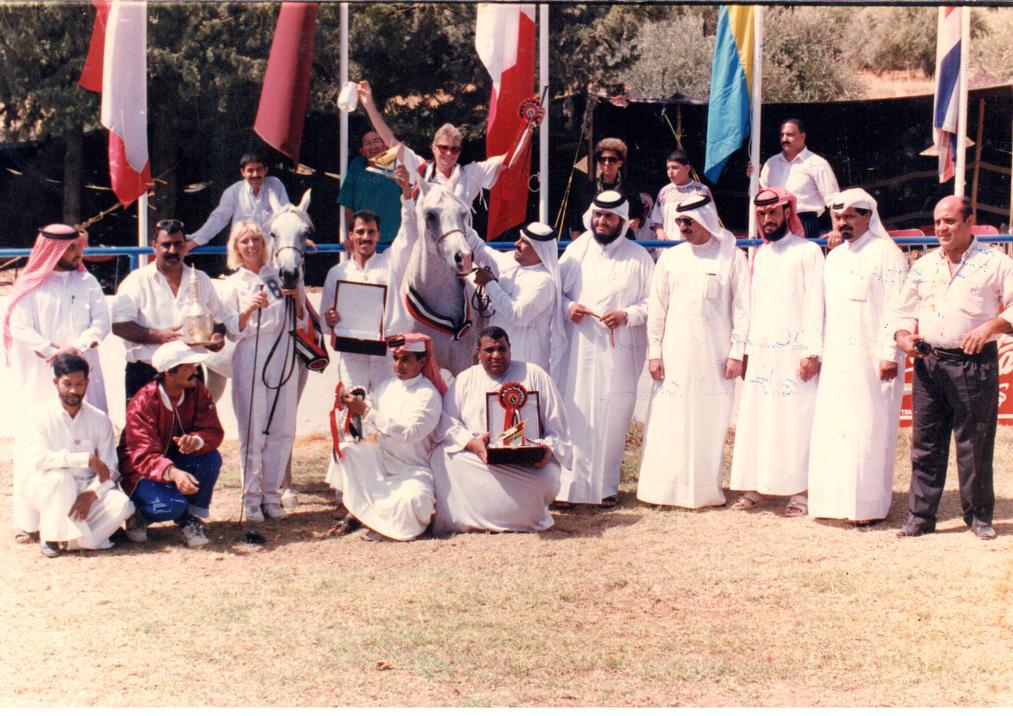
Imperial Phanila winning Champion Mare with Sheikh Hamad and the Al Shaqab Stud team at the Middle East Championships in Jordan.
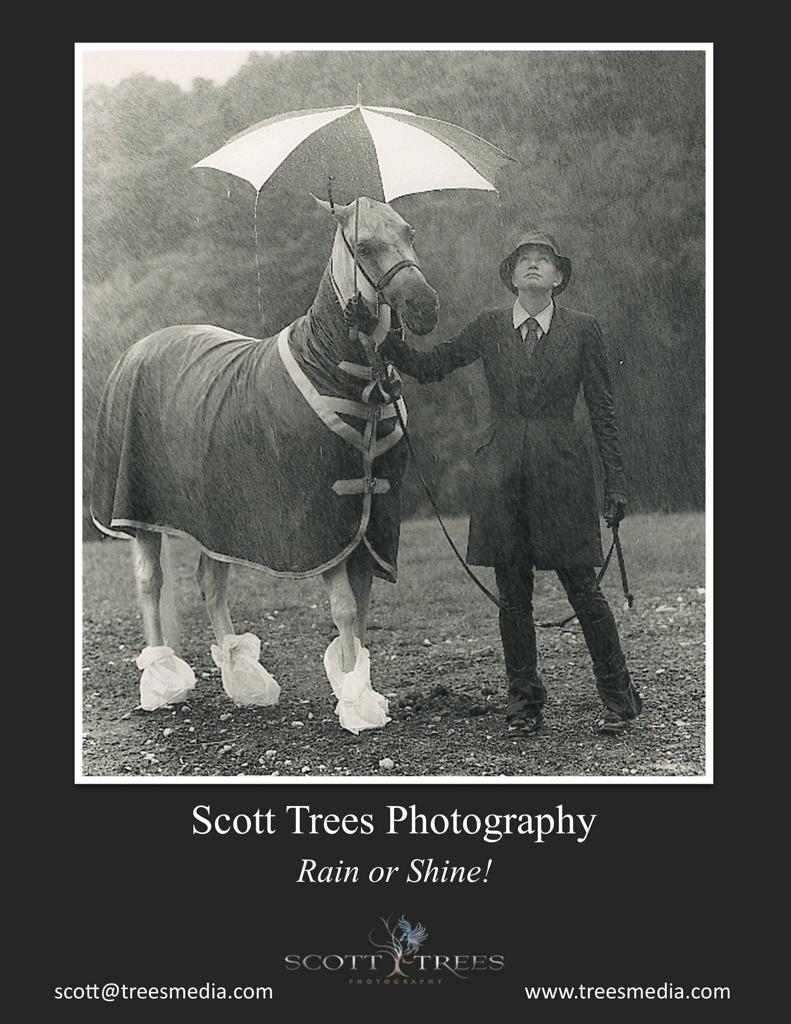
Impromptu shoot during a photo shoot with Scott Trees while it was raining.

Eileen’s third win as Female Halter Trainer of the Year for the Arabian Professional & Amateur Horseman’s Association.
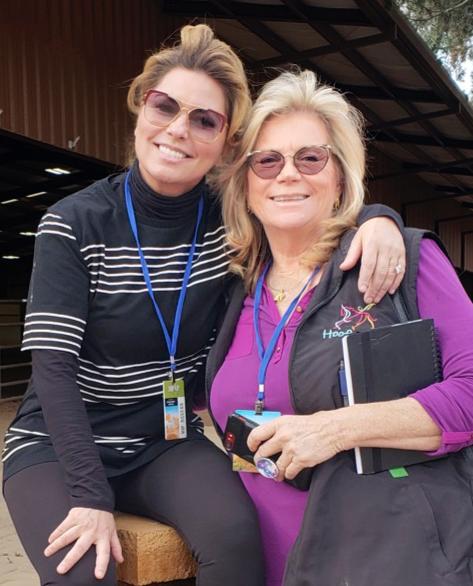
Eileen assisted Shania Twain in the purchase of her first Arabian horse at the 2019 Scottsdale Arabian Horse Show.
Jeff Wallace sat down with Eileen Verdieck to discuss the details of her life with the Arabian horse.
Tell us the first time you laid eyes on an Arabian horse. Where was it, and how did you feel?
At the age of six, I fell in love with the Arabian horse but did not even touch a horse until the age of 12, when I read the books ”The Black Stallion” and “The Island Stallion” by Walter Farley, I imagined that I was that young child, witnessing this magical, magnificent, and majestic stallion with masculine beauty. These visions of the spectacular dancing horses in my head became a form of escape from my youth living on Air Force bases in Germany.
When I was seven, I started writing my own stories about a black Arabian stallion with a marking on his head in the shape of a lightning bolt named “Lightening” and a chestnut Arabian mare named “Stormy.”
I continued writing when we moved back to the United States to Colorado Springs. I touched my first horse, and life changed as I began living my stories instead of writing them.
At 14, I used my babysitting money without my parent’s knowledge and purchased a yearling palomino Quarter Horse filly named Morning Star. After six months, I ran out of money and had to inform my parents of my purchase. To my surprise, my mother soon fell in love with Morning Star, and I luckily averted being grounded for life by my father or worse, having to sell my prized Morning Star.
When I was 17, I went to the Florida State Fairgrounds to watch an all-breed horse show, where I was selling my drawings and taking commissions of horses and dogs at the show to earn some extra cash. At this show in Tampa, Florida, I first laid eyes on an Arabian horse. I was mesmerized by a class of Arabian horses trotting through the gate to compete in the halter class.
I followed all the exhibitors and walked to the barn. I was quickly welcomed in with their friendly smiles and left hours later. At the time, I had no idea I was rubbing elbows with some of the greats, such as Roxanne Hart, the entire Lee Caldwell family, Buck Grass and his clients, Maurice Wingo, Jim Warren, and the fabulously colorful Carol Chapman, just to name a few. What sealed my direction in life was when I was introduced to Walter Farley, the author of the books that changed my life.
Tell us about your love for *Serenity Sonbolah, the 1971 United States National Champion Mare and a chestnut straight Egyptian daughter of Sameh.
In 1971, Serenity Sonbolah was the first straight Egyptian mare to win the US National Champion Mare title. I did not meet her until she was older and living at Imperial Egyptian Stud.
I had gone to interview for the manager/trainer job at Imperial (which I was hired for). The first horse I saw was Serenity Sonbolah in her stall. She had broken her leg a few years before and was pregnant. When she took the first step to turn around and greet us, I saw the majestical mare, Stormy, that had inspired my writings as a young girl. Even after seeing thousands of Arabian horses, I can vividly remember her grace. She had so much power and presence that she could “fly without wings.” Her expression, nostrils, ears, smooth body, and the lift of her high tail and neck, and, most of all, her spirit spoke to me. I could imagine her being the first mare to carry her rider in the desert galloping into battle.
What feminine characteristics are mandatory for an Arabian broodmare?
A broodmare must have quality in her looks and her pedigree. It is essential that both her conformational qualities and ancestors are looked at with an educated and open “eye.”
In breeding all Arabians, including the Egyptian horse, both things are of equal value. What the mare looks like is just one version of her ancestors. The more you know her strengths and weaknesses, the better chance of choosing the right way to breed her and being rewarded for your efforts.
I have always found the people surrounding the straight Egyptian horse to be very intellectual and intuitive. Has that been your experience as well?
I feel blessed with the people I have met because of the straight Egyptian Arabian Horse.
At the age of 19, I met Richard Pritzlaff, one of the first breeders to import horses from Egypt, in 1958. He ultimately became a friend to my family and a mentor to me.
In the early 70s, I had an Arabian training center in Albuquerque, New Mexico. I would travel 3 hours each way with my sister, Maureen, to visit Richard. He had a ranch outside Las Vegas, New Mexico, with a herd of straight Egyptian mares and stallions. I loved the history and romance of the Egyptian horse, and Richard was a wealth of information. He traveled to Egypt in the late 1950s to learn about the Egyptian Arabian Horse from General Van Szanter, who was the director of the EAO at the time.
The straight Egyptian horse came with people from all walks of life and cultures. They were happy to share their knowledge and would let you touch that newborn foal, be awed by that stallion, and step into that special mare’s stall.
Reveal your highly regarded opinions regarding Nazeer and his offspring. What do you feel they have contributed through the years?
Although I did not see the legendary Nazeer in person, many considered him the most influential sire in the Arabian breed over the last 100 years. I did see many of his offspring and descendants over the years, and I agree with that assessment. He was impressive and elegant, and as a sire, he consistently passed on an essence of quality, improving every horse that was by him. Many of his sons and daughters were used in breeding programs worldwide. Without Nazeer, the Arabian horse would not be the horse it is today.
Describe your years at Imperial Egyptian Stud in Maryland.
In my early time at Imperial Egyptian Stud, the mix of exhilaration of accomplishment and the feeling of fear best describe what my life felt like.
I accepted a job at Imperial Egyptian Stud in 1979 as the manager and trainer and remained there for 17 years. I was fortunate as Barbara Griffith, the owner of Imperial, allowed me the freedom to learn about the Egyptian horse and promote Imperial bloodlines throughout the world.
Her trust in me was instrumental in helping me become established as a national and international trainer, judge, and consultant.
At that time, few women were showing in halter at the national and international shows. Barbara’s support in the show ring and allowing me to travel around the world to learn more about the Egyptian horse turned out to be crucial to my success and future accomplishments in the Arabian horse industry. I will always be grateful to her.
Talk about the programs you have initiated or participated in promoting the Arabian horse.
I enjoyed introducing newcomers to the Arabian horse and was a guiding force to many of the world’s best breeding programs. I moved to Dubai in 2002, where I stepped back from showing and selling Arabian horses to devote time to developing a program that I felt was needed in the Arabian Horse industry. I saw the horse industry was becoming elitist and expensive for the average person to feel comfortable becoming involved with. I believed something needed to be done to broaden the base of new and potential horse lovers.
The company I created is called HoofbeatZ. It is dedicated to bringing humans and horses together in new and innovative ways. It stems from my philosophy to make horse-related activities more accessible and user-friendly to a broader general population while applying proven business practices to ensure a sustainable future for horses and humans.
It was a big success in Dubai and Doha, Qatar. Since opening in the US, it has been acclaimed by the horse industry showing how a successful outreach program could work. We are looking to duplicate the HoofbeatZ model throughout the country!
What is your favorite destination on the planet? Horse and non-horse?
Horse Related: Egypt, because of its history and the straight Egyptian horse.
Non-Horsey: Australia is a spectacular and diverse country. The Australian’s sense of humor is a blast, similar to the US, but a lot more fun!
You have had your finger on the pulse of all aspects of this industry, from breeding to showing, from nonprofit work to management … what has been the most fulfilling?
The entire world of horses and its historical importance in the history of man. The breeding and history of the Arabian horse, particularly the straight Egyptian, to which I devoted most of my professional life.
The most fulfilling has been introducing new people to the Arabian horse world. Nothing makes me happier than when I see that spark of light in their eyes filled with the awe of the Arabian horse.
If you could bring back one mare and one stallion from your past, who would they be and why?
It would have to be the breathtaking mare, Serenity Sonbolah; her being, physically and spiritually, moved me more deeply than any other horse I was ever honored to know.
The stallion would be Gazal Al Shaqab, who spent six of his younger years with me in Texas. Most everyone reading this article would know him as a remarkable stallion and a supreme sire. Just one of his offspring, Marwan Al Shaqab would guarantee his title as the most influential Arabian of the last 30 years. He has had many successful champions and champion-producing offspring all over the world.
For me, what I appreciated was Gazal’s personality and his willingness to give his all. He made everyone that ever stood him up look like they were the world’s best handler.
What advice would you give a young woman venturing into the world of Arabian horses?
I find that being a woman in the Arabian Horse world today is much easier than when I was younger. The main thing is not to focus on the obstacles at this moment but extend your vision beyond them and keep on keeping on. Whether you are a man or a woman, trying to make a career in the horse industry is difficult. You must be willing to work hard for those beliefs, be as professional as possible, and believe you can achieve your goals.
Second, never lose your curiosity and fuel that curiosity by reading or experiencing things from other industries. Open yourself to learn and listen so that you can carve a niche in your life and business. The most important lesson I have learned is that I cannot control the whole world or industry, but I can control my space in it, be the best I can within that environment, and expand out—this worked well for me. Also, surround yourselves with people that are better than you, and be prepared to learn!
Finally, I recommend thinking outside the box and being progressive. Pay attention to history, whether it’s the entire human race or our own industry—change is what helped it bloom.
Eileen, you have practically seen and done it all with great success. What would be your parting words to all of us here?
- Never stop being curious; it gives you a reason to keep going every day with hope.
- Get out of your comfort zone as much as you can; that’s where you learn and grow.
- Do something that is bigger than you and better for the whole. Never be afraid to think outside that box.



